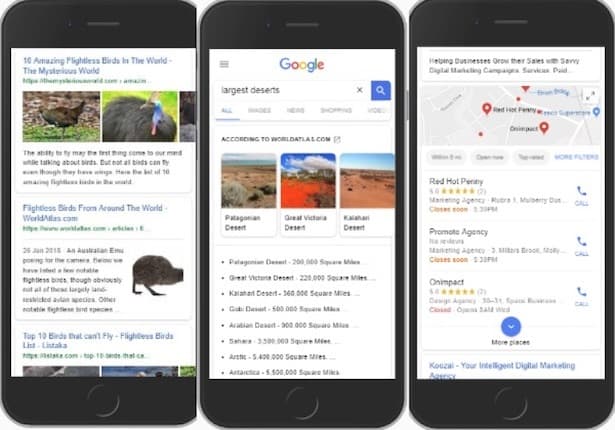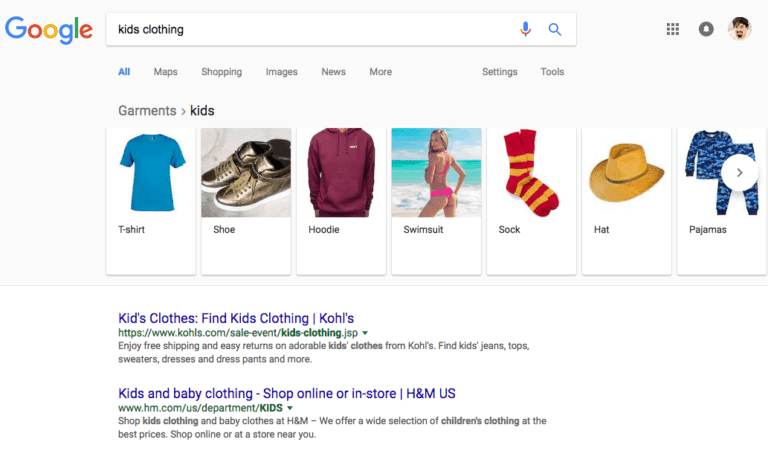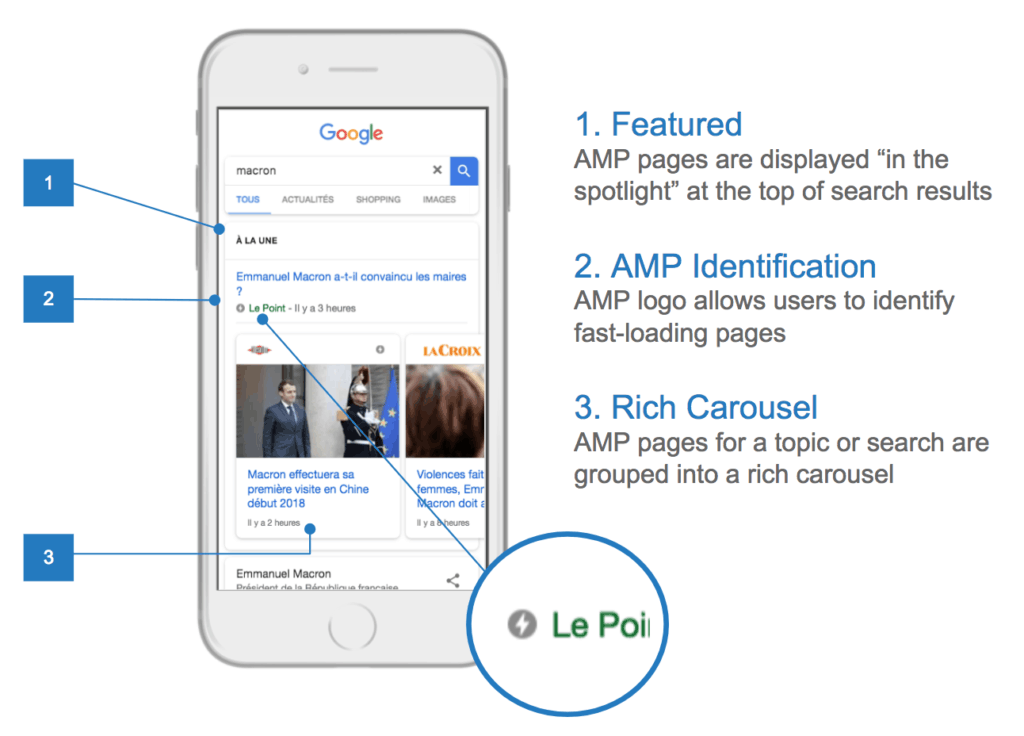Did you know that Google handles 5.5 billion searches per day, or 63,000 searches a second which is equal to 3.8 million searches a minute? So, how can you make sure that your website is listed and ranked well?
Ever since Google, Bing, Yahoo! and Yandex got together in 2011 to create Schema.org, SEOs have started talking about structured data. However, there’s still a lot of confusion as to what structured data is, what it is used for, and how to implement it for the purposes of SEO.
In this article, you’ll find out how you can use structured data for your content, gain a competitive advantage when it comes to ranking, and improve your search engine optimization.
What Is Structured Data?
 Structured data, also known as schema markup, is often referred to as the “language of search engines”. Basically, structured data means any data that is organized. For example, if you have a bunch of notes with phone messages about dates, meetings, people, times, etc, and you are organizing these into labeled rows and columns, it means you’re structuring the data. Structured data is a big part of SEO in the auto area, it helps Google display more information in the search results.
Structured data, also known as schema markup, is often referred to as the “language of search engines”. Basically, structured data means any data that is organized. For example, if you have a bunch of notes with phone messages about dates, meetings, people, times, etc, and you are organizing these into labeled rows and columns, it means you’re structuring the data. Structured data is a big part of SEO in the auto area, it helps Google display more information in the search results.
Schema markup or structured data is important in the age of Hummingbird and RankBrain. How the search engine interprets the query will determine the quality of a search result.
Example of Unstructured Data
Post-It 1: “Mark called, confirming 5pm on Thursday at Coffee Shop”
Post-It 2: “Don’t forget your 11am meeting at Frank’s Office this Wednesday”
Example Of Structured Data
| Meeting With | Time | Date | Location |
| Mark | 5 PM | Thursday | Coffee Shop |
| Frank | 11 AM | Wednesday | Office |
Google often calls structured data “explicit clues” because they are about the actual contents of a web page.
According to Google:
“Structured data is a standardised format for providing information about a page and classifying the page content; for example, on a recipe page, what are the ingredients, the cooking time and temperature, the calories, and so on.”
“Google uses structured data that it finds on the web to understand the content of the page, as well as to gather information about the web and the world in general.
“Because the structured data labels each individual element of the recipe, users can search for your recipe by ingredient, calorie count, cook time, and so on.”
(Source: Google)
Google often uses the example of recipes because it is a great way to show how rich or structured data presents itself.
 As you can see, there are a number of rich snippets. A person searching for hummus isn’t directed to a website anymore. Without clicking any further, you can see recipes, nutritional information, and further information of the product.
As you can see, there are a number of rich snippets. A person searching for hummus isn’t directed to a website anymore. Without clicking any further, you can see recipes, nutritional information, and further information of the product.
This is known as a SERP (Search Engine Results Page). Every SERP is unique, even if search queries performed are on the same search engine with the same search queries or keywords. The right side of the SERP is called the Knowledge Panel, where information for businesses such as opening hours, phone numbers, and location can be presented.
How Can One Use Structured Data?
Structured data uses HTML code, so some familiarity is necessary to enable its features. However, third-party tools are available too if the budget is too tight.
For implementing data, Google also makes the process freely available.
It essentially boils down to ensure that your back-end code includes a number of relevant content signals to Google.
These can include:
- People
- Maps
- Events
- Products
- Offers
- Reviews
- Recipes
Sadly, there is no magic button to turn on rich snippets. Let’s say you worked hard on your own site’s infrastructure and, still, search engines aren’t compelled to use them. Keep this in mind that rich snippets won’t display all of your results, and the information that is shown will vary from time to time.
That’s where Schema.org comes in. Schema, according to itself:
“Provides a collection of shared vocabularies webmasters can use to markup their pages in ways that can be understood by the major search engines: Google, Microsoft, Yandex and Yahoo!”
Schema provides necessary language and code to instruct Google so that it can highlight and feature relevant information to your business.
How does structured data support SEO?
Google, Bing, Yahoo, and other search engines encourage webmasters to use structured data, and boost that usage by providing benefits to websites if the structured data is correctly implemented.
Some of these benefits are:
1. Rich search results
 (Source: Econsultancy)
(Source: Econsultancy)
Rich search results highlight key information like styling, images, and other visual enhancements and help search engines understand the purpose of the page as accurately as possible. This means more relevant results for users and less guesswork for Google.
2. Rich Card
 Rich cards are variations on rich search results, similar to rich snippets and designed for mobile users.
Rich cards are variations on rich search results, similar to rich snippets and designed for mobile users.
According to Google:
“Rich cards are a new Search result format building on the success of rich snippets. Just like rich snippets, rich cards use schema.org structured markup to display content in an even more engaging and visual format, with a focus on providing a better mobile user experience.”
3. Enriched search results
 Enriched search results are known as the subset of the rich snippets which is implemented with the help of structured data. Very few rich result types are available as enriched search types. It includes interactive or immersive features where the users get more information displayed in SERP.
Enriched search results are known as the subset of the rich snippets which is implemented with the help of structured data. Very few rich result types are available as enriched search types. It includes interactive or immersive features where the users get more information displayed in SERP.
4. Knowledge Graph
 Knowledge graph is a type of structured data that provides information about a business, symptoms, or any entity such as a celebrity on the right side of the search engine results page.
Knowledge graph is a type of structured data that provides information about a business, symptoms, or any entity such as a celebrity on the right side of the search engine results page.
5. Breadcrumbs
 (Source: Seranking)
(Source: Seranking)
Breadcrumbs in your search result is a trail of a page that indicates the page position in the site hierarchy. It also helps users understand the hierarchy of your website, helping them to explore the website more effectively.
6. Carousels
 (Source: Seoheronews)
(Source: Seoheronews)
Carousels is just like a list rich snippet which is specially designed for mobile users. You can swipe through your mobile device as it displays products of a particular keyword that you search on search engines. It not only displays products but you can also use it for recipes, movies, restaurants, and many more.
7. Rich results for AMP
 (Source: The Benefits of Using Accelerated Mobile Pages (AMP))
(Source: The Benefits of Using Accelerated Mobile Pages (AMP))
To have AMP (Accelerated Mobile Pages) appear in carousels and with rich results, you’ll need to include structured data.
These enhanced search results also improve your CTR and drive additional traffic, because they are visually appealing. It also provides additional information to searchers. An improved CTR indirectly improves your rankings, as a user behavior signal.
Implementing structured data on your site can also help you prepare for the future of search, because Google is moving in the direction of hyper-personalization and answering questions and solving problems directly.
Does Structured Data Improve Search Rankings?
There is no absolute evidence that structured data has a direct effect on organic search rankings.
Rich snippets do make your pages appear more prominently in SERPs. This visibility leads to improved click-through rates.
According to a study by acmqueue, no more than one-third of SERPs include a rich snippet with Schema.org markup. For those who do not, this is a huge opportunity.
Today, very few things can move the dial quickly in SEO. And this can.
Conclusion
As you can see, structured data plays an important role in SEO as it helps to display more information about your website or services. It also helps to get more information displayed on your blog, increases CTR and eventually leads to more traffic and conversions.
If you have not used structured data yet, give it a try. If you already have, then make sure it is optimized properly.
Meet Parekh is a blogger and a marketing associate at Tej SolPro. When he’s not at work, you can find him watching football matches or in the football field, and exploring different coffee houses.
